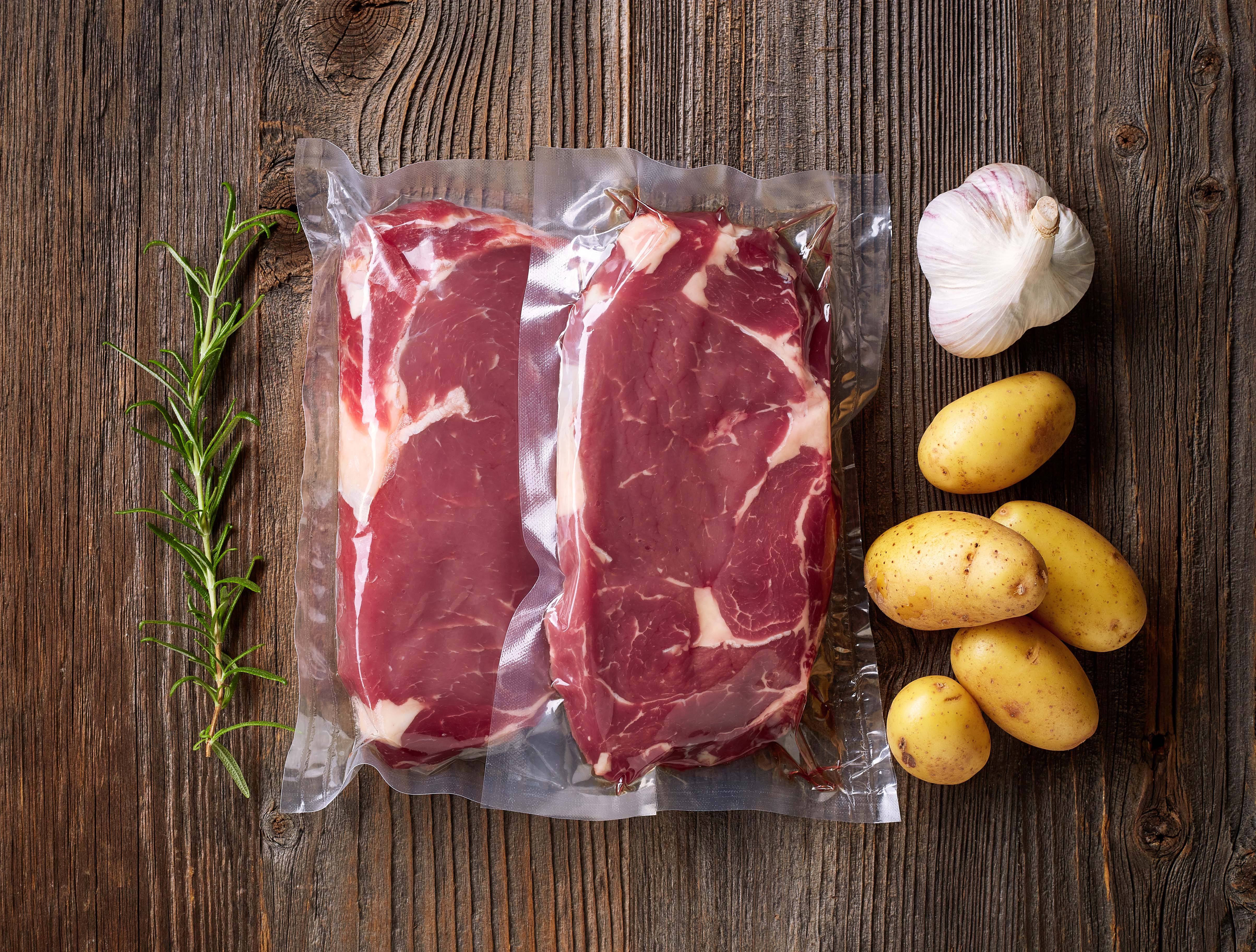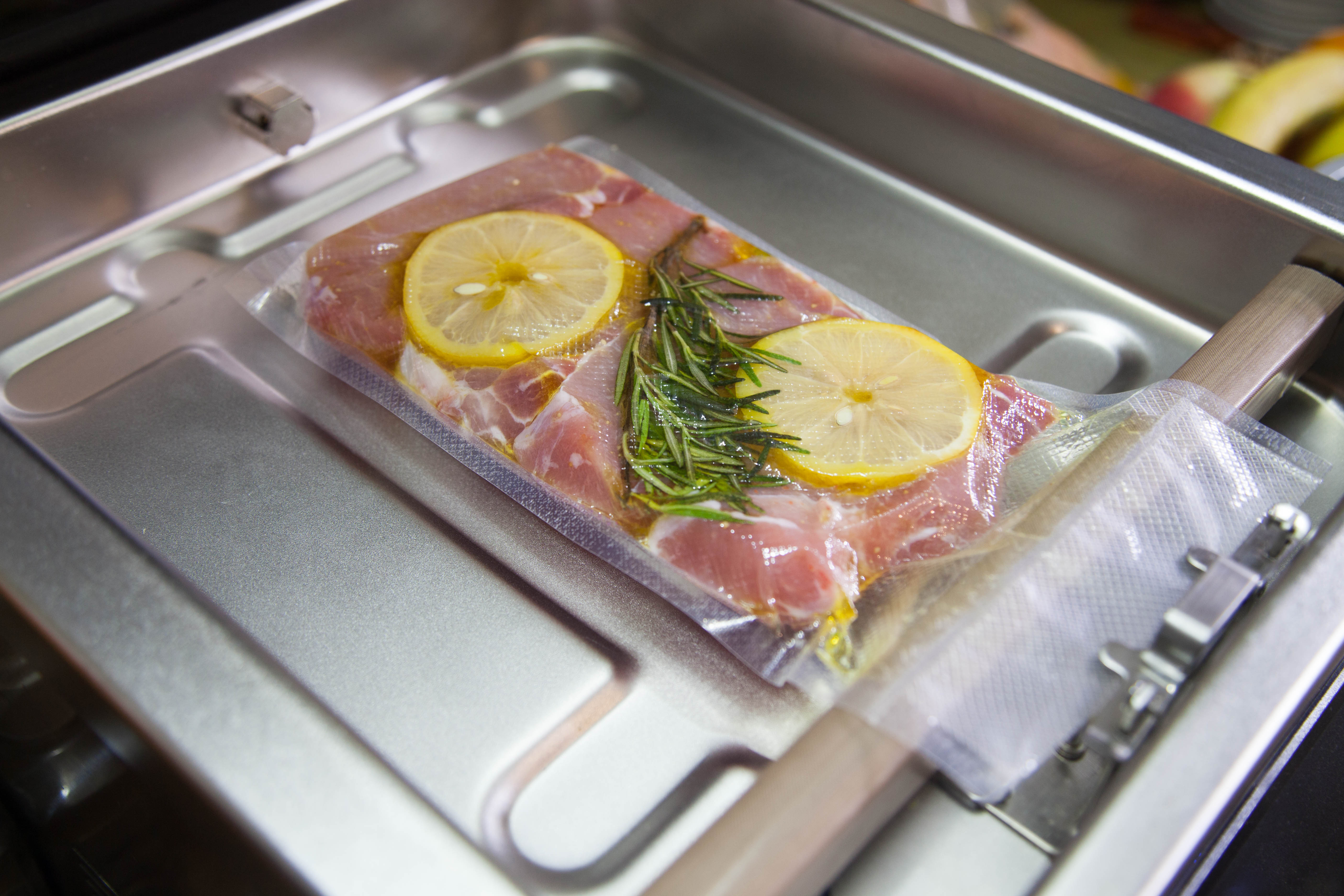6 October 2017
Sous Vide Cooking – All you want to know but were afraid to ask
Sous Vide Cooking
Recently sous vide (pronounced ‘sue-veed’) cooking has been making waves, and we’re sure you've seen it referenced somewhere. So what’s all the fuss about?

So what exactly is Sous Vide cooking?
It’s certainly not boil-in-the bag! And was actually developed in France in the 1970s. Sous vide, which means `under vacuum’, is a cooking technique in which food is vacuum-sealed in a pouch and cooked in a constant low-temperature bath of water, oxygen-free, for an extended period of time.
It’s very popular in restaurant trade due to the consistent result it achieves and it allows preparation ahead of time -it’s now starting to find its way into our domestic kitchens and home cooks are having a go too!
In essence, it’s a godsend to the time-poor consumer (which is all of us really!) when we buy slow cook ready meals that we finish off in the oven… hey presto it’s ready and on the table in under 30 minutes. No wonder its thumbs up all round! Look out for ready meals and meal kits containing pulled beef brisket, ribs, slow cooked shoulder of lamb, lamb shanks and curries, to name but a few.
However, it’s always important to have some understanding how foods, specifically proteins, respond to heat by using this process as they will differ.
What foods can I Sous Vide?
Meat, Fish, Shellfish, Vegetables, Fruits, and even Eggs
What Equipment do I need to Sous Vide?
Recently more economically priced immersion circulators or sous vide wands have become available at well-known high street cook shops, but large pans are required for use with the circulators and the cooking concept takes a bit of getting used to. Some connect to your phone via Bluetooth and allows you to stop, start and monitor your food on the go – one for those of you who love a gadget and techy things in the kitchen!
Advantages are:
- Consistent quality
- Even cooking throughout and removes guesswork
- Enhanced flavour, texture and nutritional benefits
How long do I Sous Vide for?
Well, to be honest, that depends on what you intend to sous vide. Tougher cuts of meat such as brisket, beef short ribs or lamb shoulder benefit from longer cooking times, like when using an oven. The key is tenderising the meat by holding the temperature between 54°-60°C /130°-140°F (this is great for cooking a medium/rare steak too) from six hours to three days (Yes! Three days!). During the process the sealed sous vide bag should become sterile.
Are there Food Safety Issues with Sous Vide?
Sous vide cooking does come with some caveats though and care should be taken when cooking and storing sous vide products.
The ‘danger zone’ of food temperatures, in which bacteria multiply the most rapidly, is considered to be between 4.4˚C and 60˚C (the point of pasteurization), but the majority of sous vide products are cooked between 55C and 90˚C, so should be safe.
Further information on cooking and storage is found on the Food Standard’s Agency website (Food.gov.uk).

Pros of Sous vide cooking
- It removes all the guesswork out of the cooking process, producing a product with a consistent eating quality
- No need for cutting, peeking or poking with your finger to check doneness; just perfect results every time
Cons of Sous vide cooking?
- Well, it takes longer than traditional cooking methods; it’s not a quick way to cook and it’s a two-step cooking process
- Browning in a pan is required after the sous vide process too. This also adds extra flavour
- You need extra equipment for the cooking process
Does Food Taste Different when it is cooked by Sous vide?
As the cooking temperature is so precise, the results are perfectly tender product throughout. It’s also worth knowing that Sous vide technology can change some flavours.
In a water bath, certain flavours become pronounced and others seem to change. For example, fresh garlic becomes overwhelming. Bay leaves can taste metallic and dusty. As alcohol does not evaporate within the sealed environment, its taste never disappears and can make the food tastes completely overwhelming of alcohol!
Some top tips to successful Sous Vide cooking
- Definitely season less, not more
- Be patient! This method of cooking is not for the faint-hearted –it takes time. Just trust the cooking temperature. Make the most of the opportunity to leave the kitchen and relax!
- Keep foods refrigerated, even after bagging, until you are ready to cook. You should use a thermometer with a penetration needle probe for all sous vide/low temperature cooking that exceeds two hours unless you are cooking for a ridiculously long period of time (say, 24 hours) at a constant programmed temperature.
- After cooking, rest the contents for a few minutes, remove contents from the pouch and sear and sizzle in a hot pan afterwards for that caramelised flavour of meat. And we recommend you use the meat juices to make a delicious gravy or sauce.

How do I get started with Sous Vide?
You’ll need good quality zipper lock freezer bags (please don’t use ordinary food bags, as they are not as sturdy and break down during the long, slow cooking process).
To vacuum seal or not – You don’t really need another piece of kit for this, although electric vacuum sealers are available – the zipper lock freezer bags are fine.
Lightly season just before cooking, or just after sous vide cooking.
Remove product from pouch, pat dry to remove any excess moisture, then sear in a super-hot pan to get some nice caramelisation going on and a good crust that will add to the flavour.
And there you have it,…all you wanted to know about Sous vide cooking but were afraid to ask. If you give it a go please do share the results with us via Facebook or Instagram, we’d love to see. Good luck!

